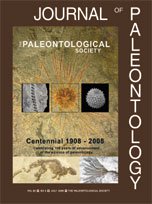Pectinifrons abyssalis new genus and species is an early Ediacaran (ca. 565 Ma) rangeomorph from the Avalon Peninsula of Newfoundland. It is known from more than 200 specimens from the Mistaken Point and Trepassey formations, and is typically preserved as a comb-shaped ridge on the top of mudstone beds beneath volcanic ashfall tuffs. Morphologic and taphonomic features suggest that the living organism consisted of two parallel series of soft rangeomorph fronds, alternately branching in an opposite arrangement from an elongate, tubular pedicle rod. The pedicle rod and the struts that represent the central stalks of the fronds were originally composed of resistant material that did not decompose until after lithification of the overlying ash bed. The fronds themselves were originally composed of a soft, non-resistant material that readily degraded, resulting in their extremely rare preservation as impressions on the bedding surface. Biometric analysis implies that Pectinifrons grew primarily by strut/frond addition, with later inflation of these elements. Pectinifrons is one of the first rangeomorph taxa to display evidence of possible age cohorts comparable to those observed in modern macrobenthic organisms.
How to translate text using browser tools
1 July 2008
Growth and Ecology of a Multi-branched Ediacaran Rangeomorph from the Mistaken Point Assemblage, Newfoundland
Emily L. Bamforth,
Guy M. Narbonne,
Michael M. Anderson
ACCESS THE FULL ARTICLE

Journal of Paleontology
Vol. 82 • No. 4
July 2008
Vol. 82 • No. 4
July 2008




